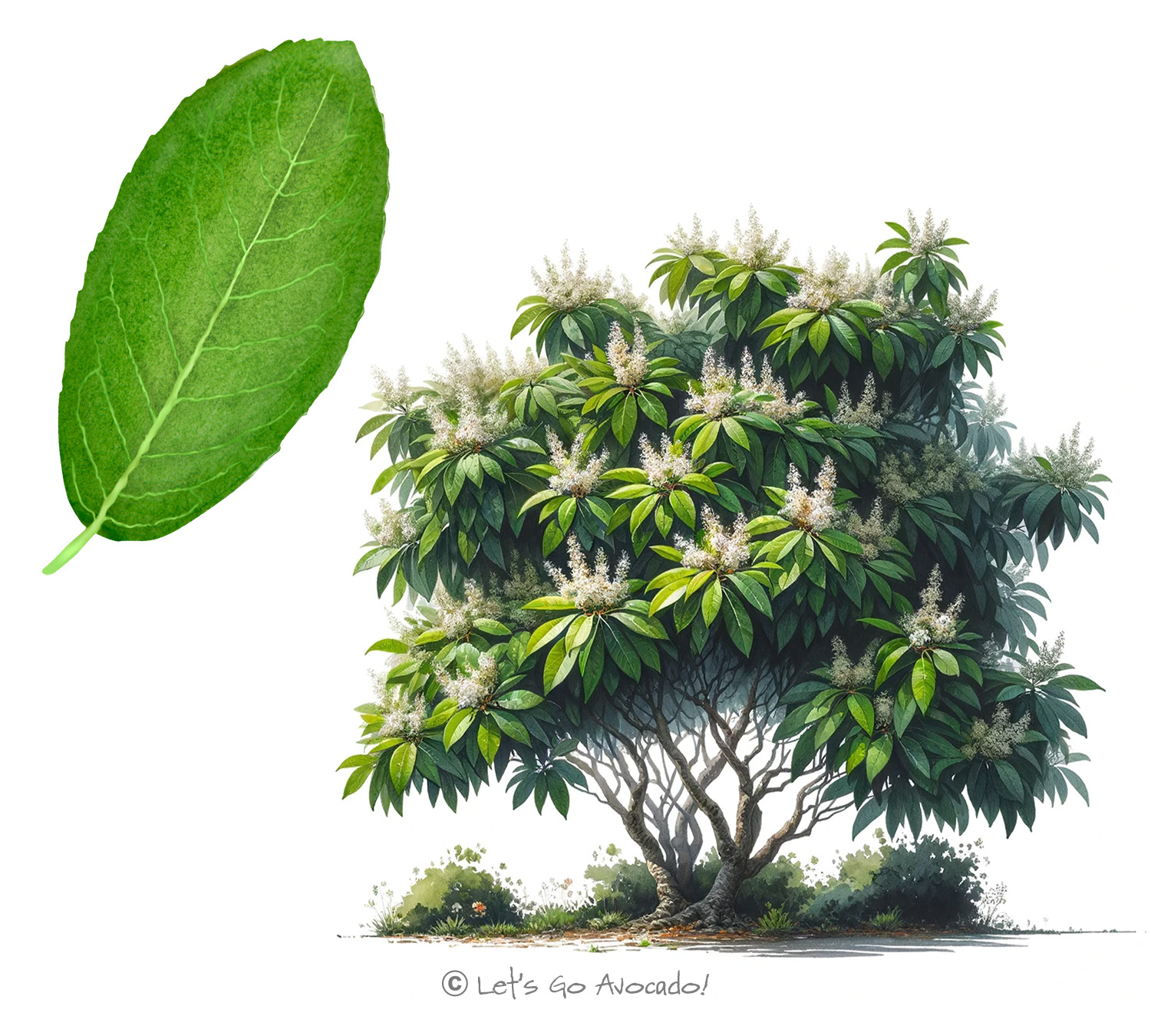The Cherry Laurel Tree: A Lush Addition to Landscapes
Hello, young nature enthusiasts! Today, let’s explore the fascinating world of the Cherry Laurel tree, known scientifically as Prunus laurocerasus. This evergreen tree is a popular sight in gardens and parks, celebrated for its glossy leaves and stunning spring flowers. Native to regions around the Black Sea, the Cherry Laurel has become a beloved ornamental tree in many parts of the world. It’s not just a pretty face; the Cherry Laurel plays a significant role in its ecosystemAn ecosystem is a community of living organisms, like insects and birds, and non-living components, like water and rocks, that interact with each other in a specific area. Learn More. Join us as we uncover the secrets and wonders of this beautiful tree.
Identifying the Cherry Laurel
The Cherry Laurel is easily recognizable by its glossy, dark green leaves, which stay vibrant throughout the year. Come spring, the tree is adorned with spikes of creamy-white flowers, creating a striking contrast against the foliage. These flowers are not only beautiful but also fragrant, attracting bees and butterflies. The tree’s bark is smooth and dark, adding to its overall aesthetic appeal.
Size and Structure: A Versatile Grower
The Cherry Laurel can vary in size, typically growing to about 20-30 feet (6-9 meters) tall. It has a dense, bushy habit, making it an excellent choice for hedges and privacy screens. The tree’s ability to adapt to different pruning styles also makes it popular for ornamental topiary work in landscapes.
Growth and Lifecycle: Adaptable and Hardy
The lifecycle of the Cherry Laurel is characterized by its adaptability and hardiness. After flowering, the tree produces small, dark berries that are attractive to birds, aiding in seed dispersal. The Cherry Laurel thrives in a variety of soil types and can tolerate shade, making it a versatile choice for different landscape settings.
Role in the Ecosystem: More Than Ornamental
In its natural and cultivated habitats, the Cherry Laurel provides shelter and food for wildlife. Its dense foliage offers nesting sites for birds, and its flowers are a nectar source for pollinators. In urban settings, the tree contributes to air purification and provides welcome greenery.
Navigating Challenges: A Resilient Species
While generally robust, the Cherry Laurel can be susceptible to pests and diseases, such as powdery mildew and shot hole disease. However, its overall resilience and ease of care make it a persistent and enduring presence in landscapes.
The Cherry Laurel in Human Context
Humans have long valued the Cherry Laurel for its ornamental beauty. Its evergreen nature and dense growth make it a preferred choice for creating year-round green spaces. The tree is also used in traditional medicine in some cultures, highlighting its multifaceted value.
The Cherry Laurel tree, with its lush foliage and springtime flowers, adds beauty and utility to the environments it inhabits. Whether providing shade in a backyard or adding greenery to a public park, the Cherry Laurel reflects the beauty and versatility of nature. As we encounter these trees in our outdoor explorations, let’s appreciate their contribution to our landscapes and ecosystems. The Cherry Laurel isn’t just an ornamental tree; it’s a living part of our natural and urban spaces, enriching the environment and supporting the wildlife within it.
Remember, each tree around us has its unique story and role in nature. Keep exploring and learning, and you’ll find that every leaf and branch has a tale to tell!










